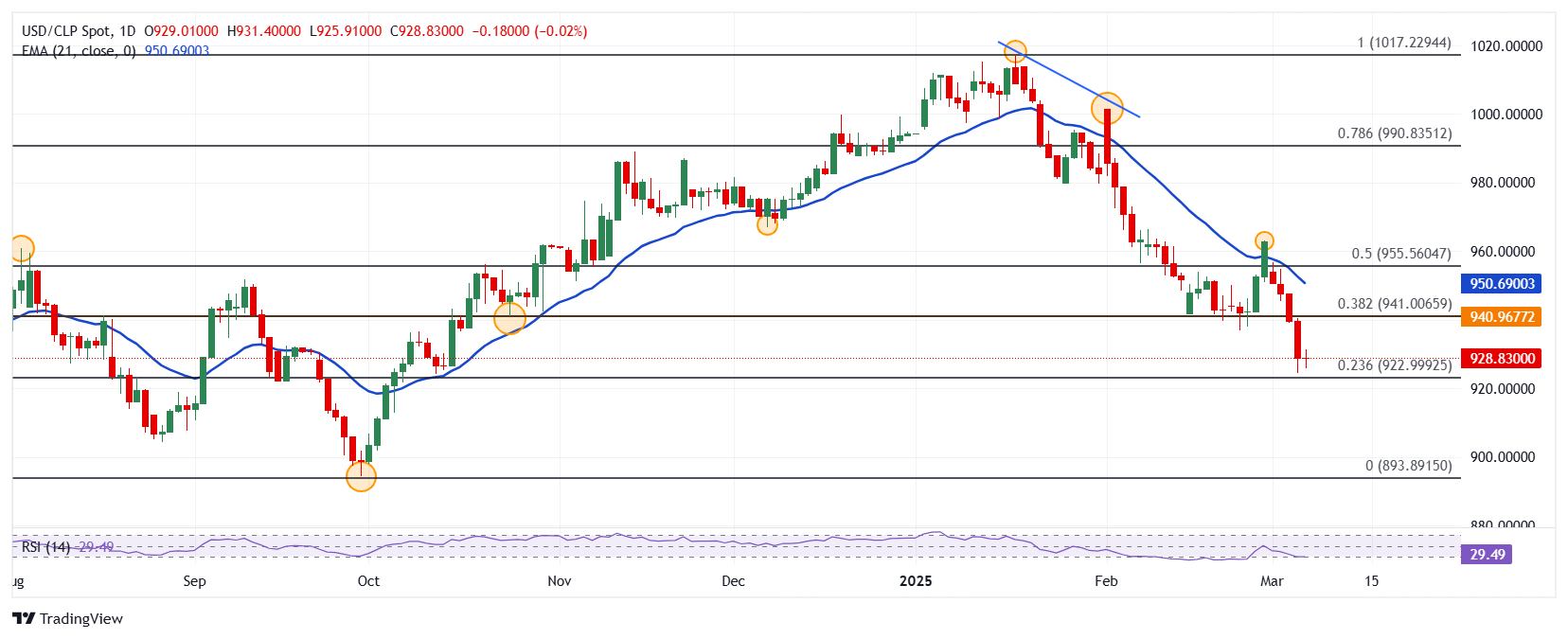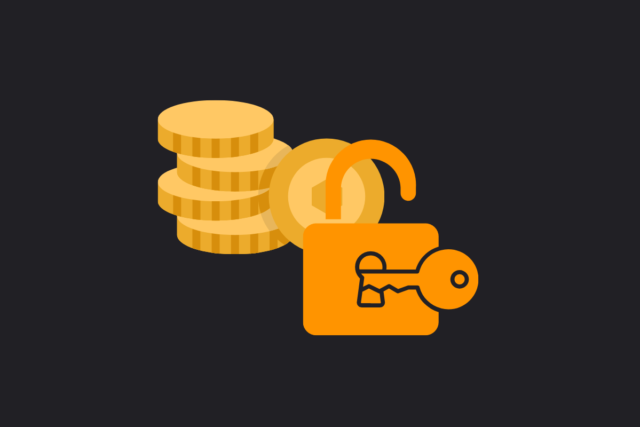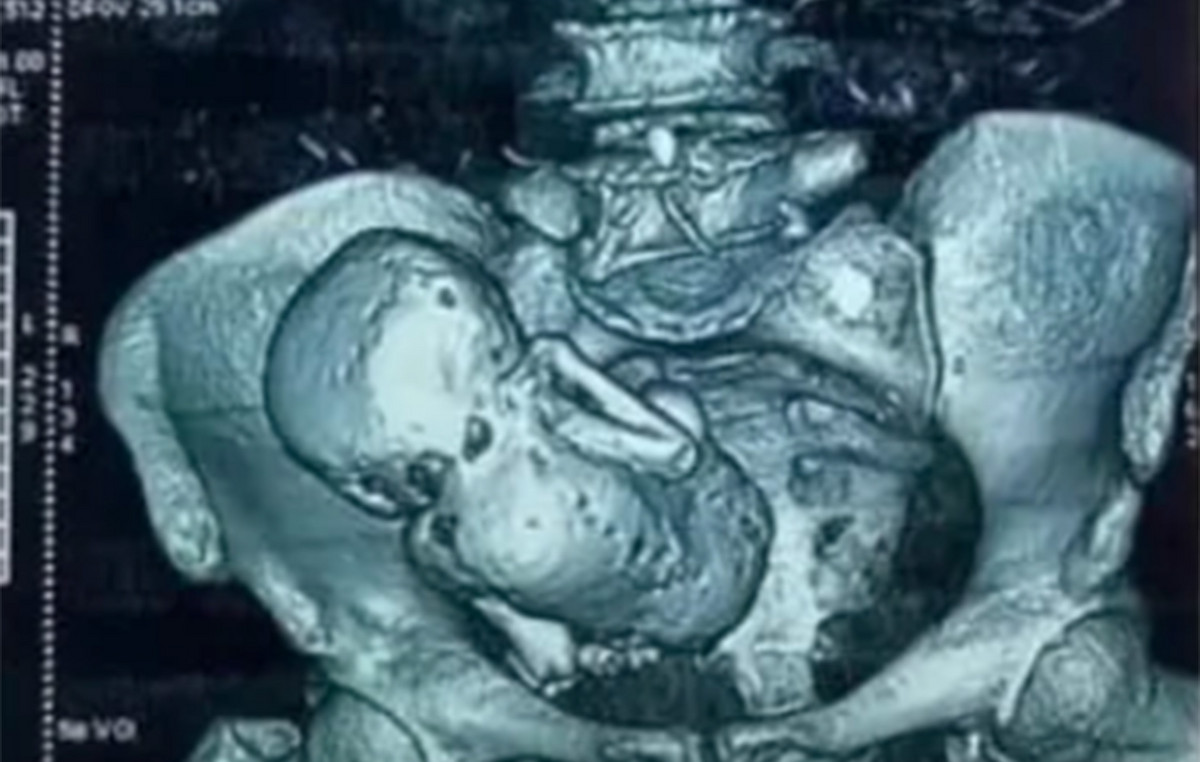- The dollar rises 0.02% in the day against Chilean peso, currently operating over 928.98.
- The dollar index falls 0.61% daily, consolidating at least four months.
- The non -agricultural payrolls of the United States increase by 151,000 in February, below market estimates.
- Investors will be attentive to the speeches of Jerome Powell, Michelle Bowman, Adriana Kugler and John Williams, members of the Fed.
The USD/CLP marked a maximum of the day in 931.40, finding vendors that dragged parity to a daily minimum at 925.91. At the moment, the USD/CLP quotes over 928.98, rising 0.02% today.
The Chilean weight remains expectant prior to the speeches of the Federal Reserve members
Based on the information presented by the United States Labor Statistics Office, non -agricultural payrols increased by 151,000 in February, a figure less than 160,000 projected by the market, although located above the 125,000 registered the previous month. The dollar index (DXY) goes back 0.61% daily, visiting minimums of November 6 in 103.86, registering four consecutive sessions down.
After this news, the Chilean weight operates with marginal losses, ending a streak of four consecutive sessions with profits, while the USD/CLP has a daily gain of 0.02%, being held within the operational range of Thursday’s session at 928.98.
The operators will set their attention on the speech of the president of the Federal Reserve, Jerome Powell, as well as those who will carry out their colleagues, John Williams, Adriana Kugler and Michelle Bowman, during the day.
Technical levels in the USD/CLP
The USD/CLP reacted down from a resistance given by the maximum of February 28 963.00. The next key resistance is 1,017.05, pivot point on January 17. To the south, the important support is observed at 894.25, minimum of September 30, 2024.
USD/CLP daily graphics

US dollar FAQS
The US dollar (USD) is the official currency of the United States of America, and the “de facto” currency of a significant number of other countries where it is in circulation along with local tickets. According to data from 2022, it is the most negotiated currency in the world, with more than 88% of all global currency change operations, which is equivalent to an average of 6.6 billion dollars in daily transactions. After World War II, the USD took over the pound sterling as a world reserve currency.
The most important individual factor that influences the value of the US dollar is monetary policy, which is determined by the Federal Reserve (FED). The Fed has two mandates: to achieve price stability (control inflation) and promote full employment. Its main tool to achieve these two objectives is to adjust interest rates. When prices rise too quickly and inflation exceeds the 2% objective set by the Fed, it rises the types, which favors the price of the dollar. When inflation falls below 2% or the unemployment rate is too high, the Fed can lower interest rates, which weighs on the dollar.
In extreme situations, the Federal Reserve can also print more dollars and promulgate quantitative flexibility (QE). The QE is the process by which the Fed substantially increases the flow of credit in a stuck financial system. It is an unconventional policy measure that is used when the credit has been exhausted because banks do not lend each other (for fear of the default of the counterparts). It is the last resort when it is unlikely that a simple decrease in interest rates will achieve the necessary result. It was the weapon chosen by the Fed to combat the contraction of the credit that occurred during the great financial crisis of 2008. It is that the Fed prints more dollars and uses them to buy bonds of the US government, mainly of financial institutions. Which usually leads to a weakening of the US dollar.
The quantitative hardening (QT) is the reverse process for which the Federal Reserve stops buying bonds from financial institutions and does not reinvote the capital of the wallet values that overcome in new purchases. It is usually positive for the US dollar.
Source: Fx Street
I am Joshua Winder, a senior-level journalist and editor at World Stock Market. I specialize in covering news related to the stock market and economic trends. With more than 8 years of experience in this field, I have become an expert in financial reporting.







